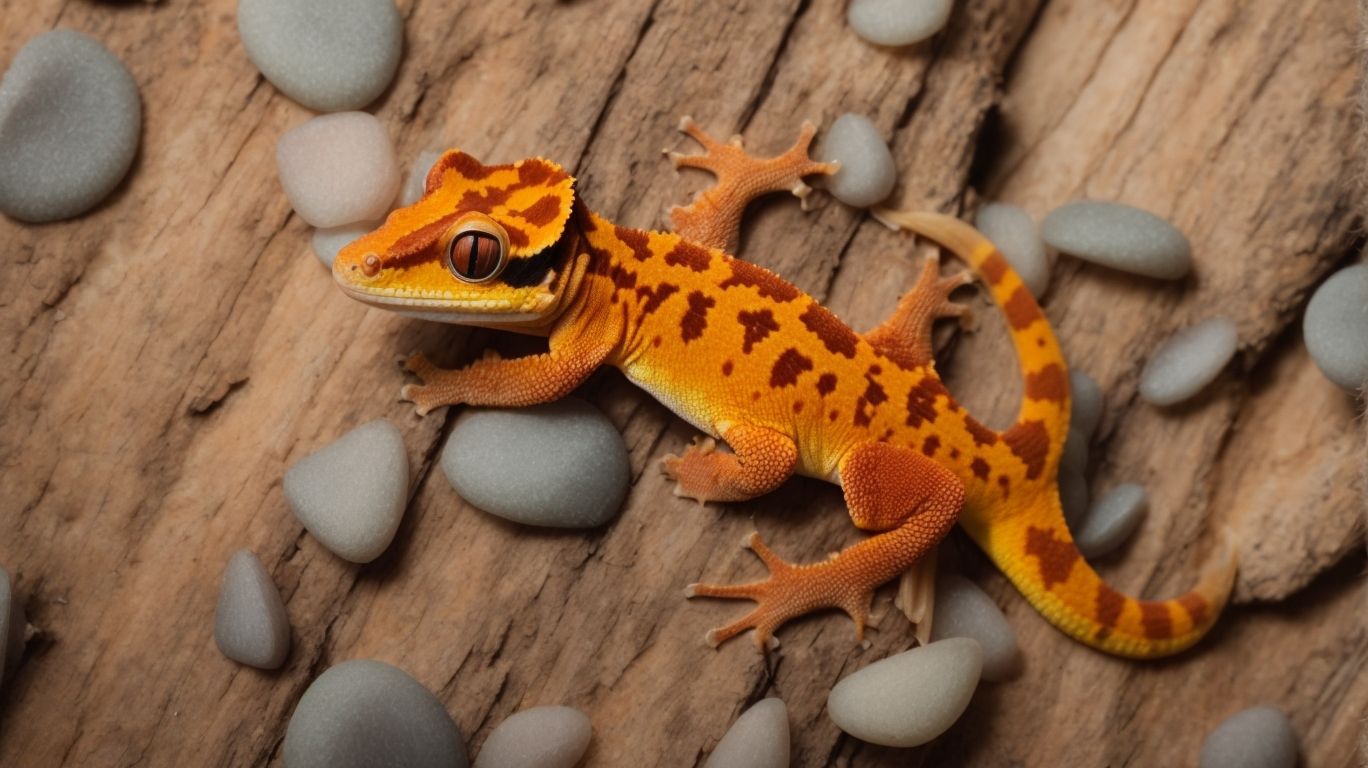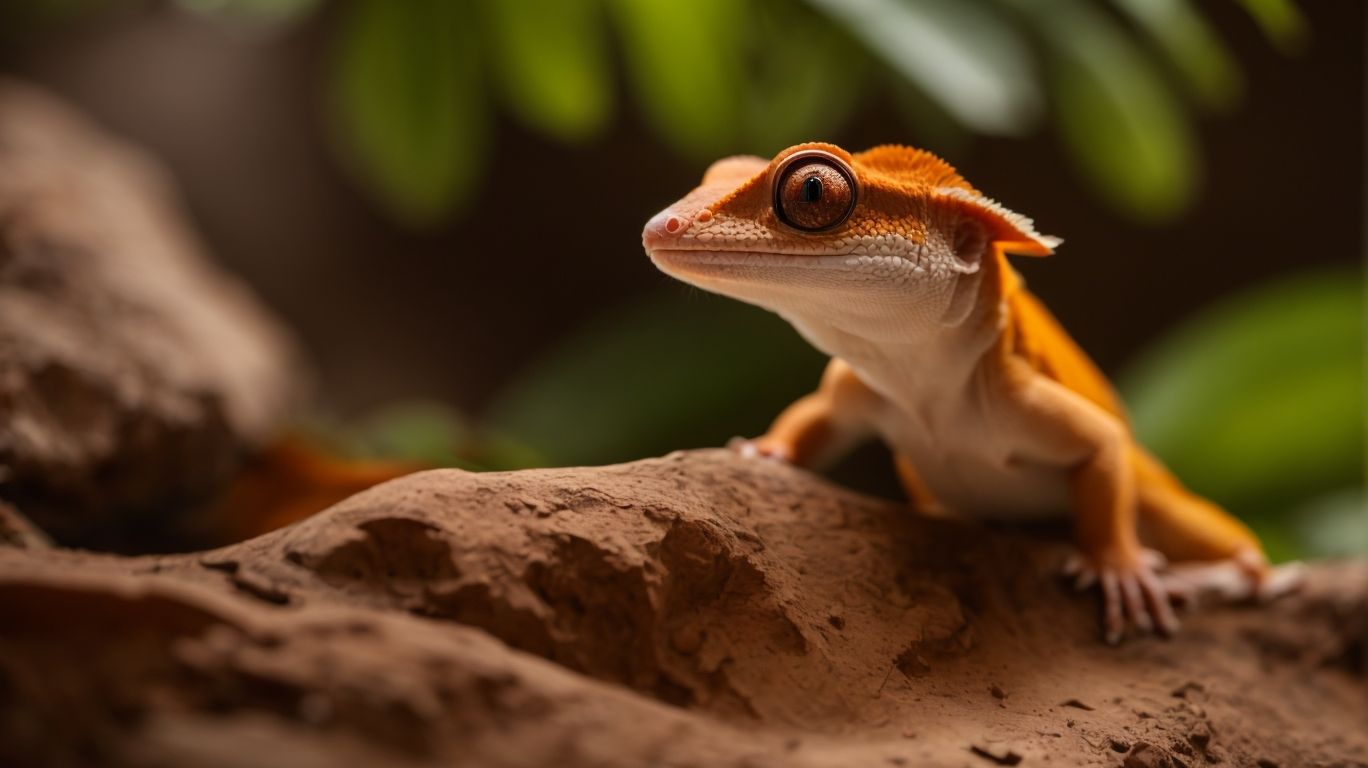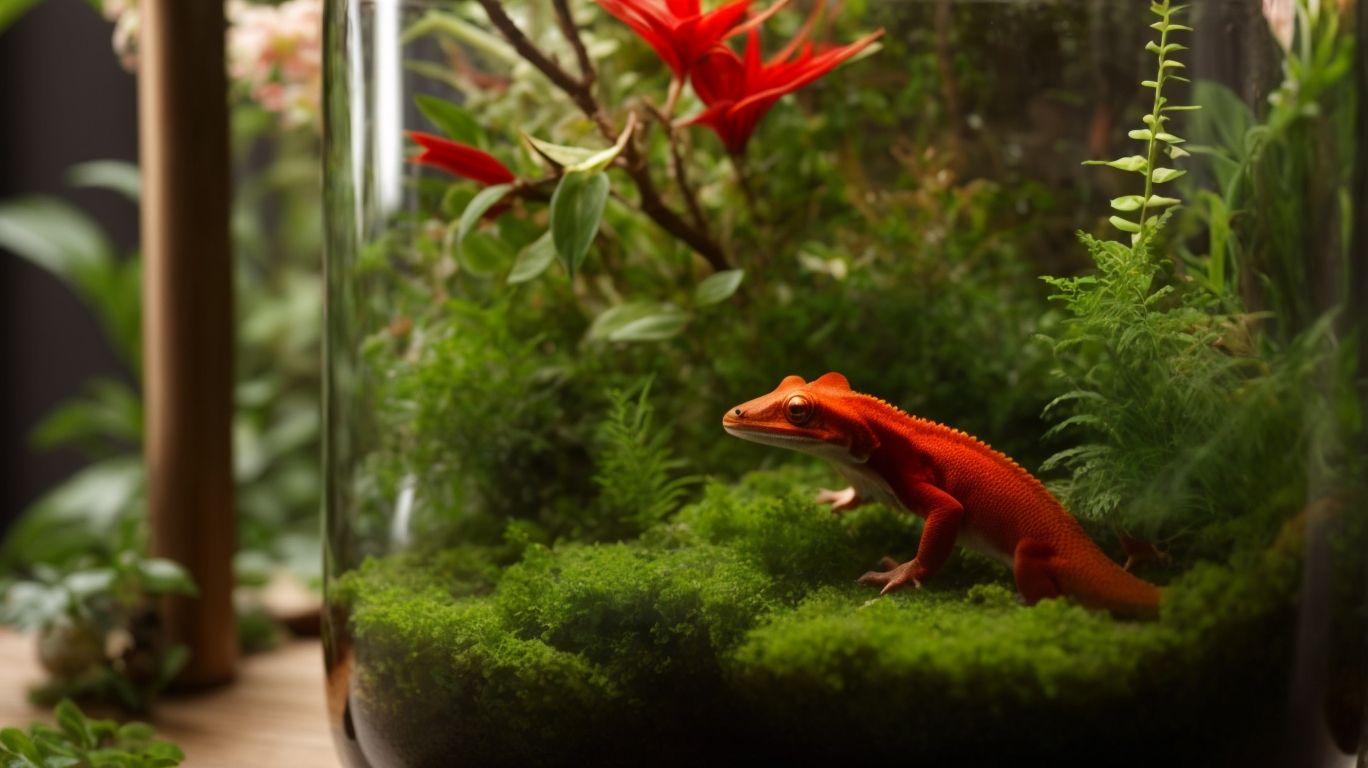
Crested Gecko Coloring and Patterns: What You Need to Know
Do you want to learn more about the mesmerizing world of crested gecko coloring and patterns? In this article, we will delve into everything you need to know about these extraordinary and stunning creatures.
From their natural colors and patterns to the various morphs and genetic factors that impact their appearance, we will cover it all. We will also discuss how diet, environmental factors, and breeding techniques can influence and enhance their coloring and patterns.
Whether you are an experienced crested gecko owner or just starting out, this article is a must-read for anyone fascinated by these captivating reptiles.
What Are Crested Geckos?
Crested geckos, also known as eyelash geckos, are a popular choice for reptile enthusiasts as pets due to their unique characteristics and manageable size. These fascinating creatures belong to the family of Rhacodactylus and are native to New Caledonia, a group of islands in the Pacific Ocean.
Crested geckos are known for their distinctive crests, which run from their eyes to the base of their tails. These reptiles are often vibrant in color and have eye-catching patterns. They are a popular choice for both beginner and experienced owners due to their docile nature and low-maintenance requirements.
These geckos thrive in moderate temperatures and are arboreal, meaning they spend most of their time in trees. Their adaptability and low space requirements also make them a convenient pet option.
What Are the Natural Colors and Patterns of Crested Geckos?
Crested geckos exhibit a diverse range of natural colors and patterns, including variations in their dorsal crests, spots, and stripes, adding to the allure of these captivating reptiles.
Their coloration can vary from vibrant hues to subtle shades, while their patterns showcase intricate designs that contribute to their visual appeal.
Crested geckos are known for their bold and striking colors, ranging from vibrant reds, blues, and yellows to soft pastels and earthy browns. These colors immediately catch the eye and make each gecko unique.
The patterns on their skin can be intricate spots, mesmerizing stripes, or a combination of both, adding to the fascination and joy of caring for these stunning creatures.
What Are the Different Morphs of Crested Geckos?
Crested geckos are known for their fascinating morphological variations, encompassing an array of distinct morphs such as bicolor, tricolor, harlequin, dalmatian, patternless, pinstripe, tiger, mosaic, and marbled. Each morph showcases unique coloration and patterns, contributing to the diversity within the crested gecko community.
Their striking bicolor morph displays two predominant colors, often with a clear demarcation point, while the tricolor variation features an additional color, creating a visually stunning appearance.
The harlequin morph is characterized by irregular patches and splashes of contrasting colors, adding a playful and vibrant element to their overall aesthetic. Dalmatian geckos, as the name suggests, exhibit speckled patterns reminiscent of the beloved dog breed, creating a charming and distinctive effect that sets them apart in the reptile world.
What Causes Changes in Crested Gecko Coloring and Patterns?
The coloring and patterns of crested geckos can be influenced by a combination of genetic variation and environmental factors, leading to intriguing changes in their phenotypic expression.
Understanding the underlying mechanisms that drive these changes provides insights into the fascinating dynamics of crested gecko pigmentation and scale patterns.
These factors interact in complex ways, shaping the physical appearance of crested geckos. Genetic variation plays a crucial role, as different combinations of genes can result in a wide array of color and pattern variations.
Environmental factors such as temperature, humidity, and diet can also impact the gecko’s appearance. For example, exposure to varying temperatures during development may influence the intensity of coloration. By delving into these influences, we gain a deeper appreciation for the diversity and adaptability of these remarkable creatures.
How Does Diet Affect Crested Gecko Coloring?
The diet of crested geckos plays a crucial role in influencing their pigmentation and color genetics, as the nutrients and supplements they receive can impact the vibrancy and richness of their coloration. Understanding the dietary requirements and their effects on pigmentation is essential for maintaining the optimal health and appearance of these captivating reptiles.
Proper nutrition is fundamental for crested geckos to develop and maintain their stunning array of colors. A balanced diet rich in vitamins, minerals, and calcium, alongside gut-loaded insects and fruits, can contribute to vibrant pigmentation. For instance, carotenoids found in fruits and vegetables can enhance the reds and oranges in their skin, while a deficiency in essential nutrients may lead to dull or faded colors. Careful consideration of their diet ensures that crested geckos showcase their natural beauty to the fullest.
What Role Does Genetics Play in Crested Gecko Coloring and Patterns?
Genetics play a crucial role in determining the coloring and patterns of crested geckos. They influence the inheritance of specific traits, color variations, and potential mutations within breeding populations. Understanding these genetic principles is essential for breeders and enthusiasts looking to cultivate desired phenotypic characteristics.
This knowledge allows breeders to predict the potential outcomes of mating different geckos by analyzing the genetic makeup of the parents. It enables them to select for specific traits and colors, enhancing the overall breeding program.
The possibility of mutations adds a fascinating element to breeding programs. New and unexpected variations can emerge, further diversifying the spectrum of crested gecko appearance.
How to Enhance Crested Gecko Coloring and Patterns?
Enhancing the coloring and patterns of crested geckos involves meticulous attention to their dietary supplements, environmental conditions, and overall husbandry practices.
By optimizing these factors, enthusiasts and breeders can promote the development of vibrant colors and captivating patterns in their crested gecko collections.
Crested geckos require a balanced diet with essential vitamins and minerals to maintain vibrant skin pigmentation. It’s crucial to create a suitable habitat with proper temperature, humidity, and lighting for their overall well-being and coloration.
Providing a stress-free environment and ample hiding spots allows crested geckos to display their full range of natural colors and patterns. By incorporating these measures into their care regimen, these captivating reptiles can exhibit their full visual appeal.
What Are the Best Supplements for Crested Geckos?
Carefully selecting the best supplements for crested geckos is essential for supporting their overall health, optimizing their diet, and promoting the development of vibrant coloring and intricate patterns. Identifying and administering the appropriate supplements contributes to ensuring the well-being and visual appeal of these captivating reptiles.
Proper supplementation plays a critical role in meeting the specific dietary needs of crested geckos, especially in captivity. It helps to compensate for any nutritional deficiencies in their regular diet, ensuring they receive a well-rounded, balanced intake.
The right supplements can enhance the luster and intensity of their colors, accentuating their natural beauty. By incorporating suitable supplements, owners can aid in the maintenance of healthy skin, vibrant scales, and robust bone structure for their beloved crested geckos.
How Can Environmental Factors Affect Crested Gecko Coloring and Patterns?
Environmental factors such as temperature, humidity, and UV lighting play a significant role in influencing the coloring and patterns displayed by crested geckos, impacting their physiological responses and visual characteristics.
Understanding and managing these environmental parameters are crucial for maintaining the optimal conditions that promote vibrant coloration and intricate patterns in these captivating reptiles.
These factors directly affect the gecko’s ability to regulate its body temperature, which in turn influences its color pigmentation.
For example, higher temperatures may lead to more vibrant and intense coloration, while lower temperatures can result in duller hues. The presence of UV lighting is essential for the synthesis of vitamin D3, which is vital for the gecko’s overall health and can impact its coloration. Similarly, humidity levels influence the shedding process and can affect the clarity and intensity of their patterns.
What Are the Most Common Color and Pattern Abnormalities in Crested Geckos?
While crested geckos are known for their stunning coloration and intricate patterns, they can also exhibit certain abnormalities such as pattern balding and color fading, resulting from variations in their color genetics and environmental influences. Recognizing and understanding these anomalies is essential for ensuring the well-being and visual integrity of these captivating reptiles.
Pattern balding is a common issue in crested geckos, characterized by patches of missing scales or reduced pigmentation. This condition can be influenced by genetics and stress.
On the other hand, color fading is often caused by excessive exposure to UVB light or a lack of essential dietary components. It’s important to understand the role of genetics and environmental factors in these abnormalities to ensure the overall health and vibrant colors of crested geckos.
What Is Color Fading in Crested Geckos?
Color fading in crested geckos refers to the gradual loss or reduction in the intensity of their natural pigmentation, which can be influenced by various factors such as health issues, environmental stress, and genetic predispositions.
Understanding the causes and implications of color fading is crucial for addressing and mitigating this phenomenon to maintain the visual vibrancy of these captivating reptiles. This shift in pigmentation can be particularly concerning for crested gecko enthusiasts, as it may impact the aesthetic appeal and overall health of these remarkable creatures.
Factors such as inadequate nutrition, improper temperature regulation, and excessive handling can contribute to color fading. Environmental stressors like sudden changes in habitat or lighting can also play a role in this process. It is important for caretakers to carefully monitor and address any potential triggers to ensure the well-being and vibrancy of their crested geckos.
What Causes Pattern Balding in Crested Geckos?
Pattern balding in crested geckos manifests as the loss or thinning of characteristic patterns on their skin, often attributed to genetic variations and phenotypic expressions within breeding populations. Understanding the underlying genetic factors and phenotypic traits is essential for addressing and managing pattern balding in these captivating reptiles.
This phenomenon can be influenced by genetic predispositions, wherein certain geckos may inherit a predisposition to pattern balding from their parents.
Specific phenotypic traits, such as the texture and color of the skin, can impact the severity and occurrence of balding. These factors intertwine to shape the unique appearance of individual geckos.
Proper identification and understanding of these genetic and phenotypic elements play a crucial role in the responsible breeding and conservation efforts for crested geckos.
How Can You Treat Color and Pattern Abnormalities in Crested Geckos?
Addressing color and pattern abnormalities in crested geckos requires attentive care, targeted treatments, and a thorough understanding of the underlying factors impacting their pigmentation and scale patterns.
Implementing appropriate care tips and health-focused interventions is essential for promoting the visual integrity and well-being of these captivating reptiles.
Owners should provide a well-balanced diet rich in essential nutrients, including calcium and vitamin D3, to support healthy skin pigmentation and overall color vibrancy.
Maintaining optimal humidity levels in the gecko’s habitat can help prevent skin dryness and shedding irregularities, which may affect their patterns.
Regular veterinary check-ups are also crucial to address any potential health issues that could impact the gecko’s coloration and patterns, ensuring a vibrant and healthy appearance.
How to Breed Crested Geckos for Desired Coloring and Patterns?
Breeders of crested geckos seek to selectively propagate desired coloring and patterns through strategic breeding programs, leveraging the principles of genetics, inheritance, and morphological traits to achieve specific phenotypic expressions.
Understanding the intricacies of breeding practices and the potential for genetic variations is paramount for cultivating captivating crested gecko offspring with desired visual characteristics.
Breeding crested geckos involves careful selection of genetic pairs to produce offspring with unique colors and patterns. Genetic mutations also contribute to the development of new morphs and variations. To achieve desired traits, breeders must have a deep understanding of genetics and anticipate outcomes of different pairings.




No Comments